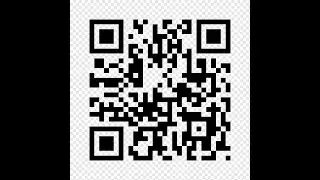Access Set Items In Python | Python 4 You | Lecture 137
Access Set Items in Python
Sets are an essential data structure in Python that allow you to store a collection of unique elements. When working with sets, you might often need to access specific items for various operations.
Understanding Sets:
Before delving into how to access set items, let's briefly recap what sets are and their key characteristics:
Sets are an unordered collection of unique elements, meaning they do not allow duplicate values.
Sets are mutable, which means you can add or remove elements after creating them.
Sets can contain elements of different data types, such as integers, strings, floats, and more.
Now, let's explore the various methods for accessing items in sets.
Accessing Set Items by Iteration:
One of the most common and straightforward methods to access items in a set is by iterating through the set using a loop. Here's an example using a for loop:
my_set = {1, 2, 3, 4, 5}
for item in my_set:
print(item)
Accessing a Specific Set Item:
If you need to access a specific item in a set by its index (position), you'll encounter a challenge. Unlike lists and tuples, sets do not have indexes because they are unordered collections. Therefore, sets do not support direct indexing. You can't access items in a set by using set[index] as you would with lists.
Membership Testing:
To access a specific item, you can use membership testing. The in keyword is a useful tool for checking if an item exists in the set. It returns a Boolean value, indicating whether the item is present or not. Here's an example:
python code
my_set = {1, 2, 3, 4, 5}
if 3 in my_set:
print("3 is in the set")
else:
print("3 is not in the set")
In this example, we check if the item 3 is present in my_set. If it is, we print that it's in the set.
Accessing Set Items by Converting to a List:
Another way to access items in a set is by converting the set to a list. Lists support direct indexing, so you can then access items by their positions in the list.
Accessing Set Items Using a Loop with Enumerate:
If you need to access items by index while iterating through a set, you can use the enumerate function in a loop. Enumerate provides both the index and the item in each iteration. Here's an example:
python
Copy code
my_set = {1, 2, 3, 4, 5}
for index, item in enumerate(my_set):
print(f"Item at index {index}: {item}")
In this example, the enumerate function assigns the index to the index variable and the item to the item variable in each iteration. This allows you to access items by index while iterating through the set.
Accessing the First Item in a Set:
If you want to access the first item in a set, one way to achieve this is by converting the set to a list and then using index 0. Here's an example:
python
Copy code
my_set = {5, 2, 1, 4, 3}
Convert the set to a list
my_list = list(my_set)
Access the first item by index
first_item = my_list[0]
print("First item in the set:", first_item)
Keep in mind that this method changes the order of elements since sets are unordered collections.
Accessing the Last Item in a Set:
To access the last item in a set, you can convert the set to a list and then use index -1. This method relies on the fact that lists allow negative indexing to access elements from the end. Here's an example:
python
Copy code
my_set = {5, 2, 1, 4, 3}
Convert the set to a list
my_list = list(my_set)
Access the last item by index
last_item = my_list[-1]
print("Last item in the set:", last_item)
As with accessing the first item, converting the set to a list changes the order of elements in the set.
Using Built-In Functions:
Python provides built-in functions that allow you to access set items conveniently. Here are some of these functions:
pop(): The pop() method removes and returns an arbitrary (not necessarily the first or last) item from the set. This function is primarily used to remove elements from the set but can also be used to access items.
next(iterable): The next() function is used to iterate through sets. It returns the next item in the set. This function is particularly useful when you need to retrieve the first item in the set.
Summary:
Accessing set items in Python can be achieved through various methods, depending on your specific requirements. While sets do not support direct indexing, you can access items by iterating through the set, converting it to a list, using membership testing, or employing built-in functions like pop() and next(). Choose the method that best suits your use case to efficiently work with set items in your Python programs.#python4 #pythontutorial #pythonprogramming #python3 #pythonforbeginners #pythonlectures #pythonprograms #pythonlatest #rehanblogger #python4you #pythonlatestversion #pythonlatestversion Learn python3.12.0 and latest version of python3.13. If you are searching for python3.13.0 lessons, you are at the right place as this course will be very helpful for python learners or python beginners.







![Nioh 2 Build Showcase: The Wandering Exorcist - Purity Build [Detail's in the Description Below]](https://images.videosashka.com/watch/vKFoDaJpzvg)